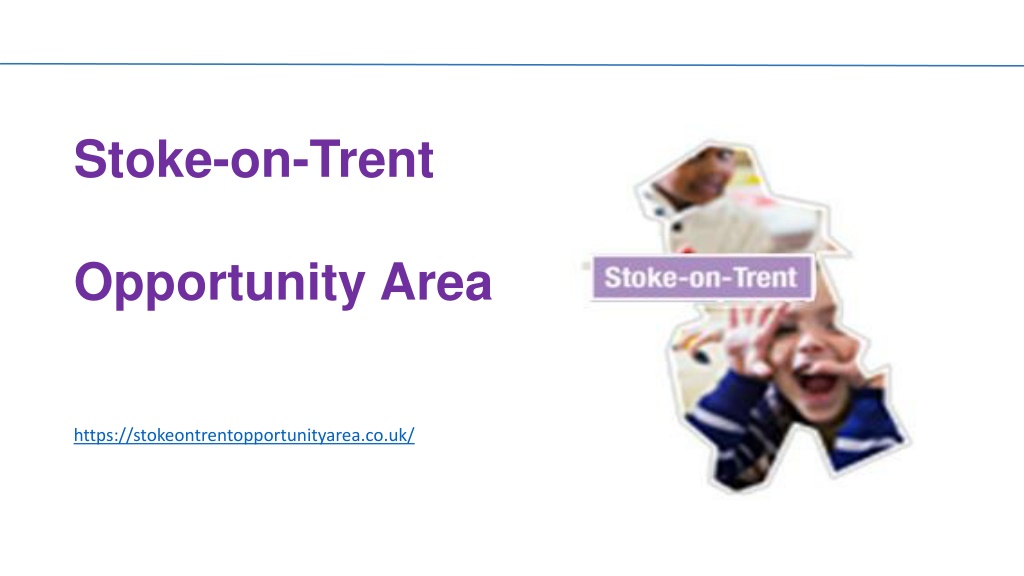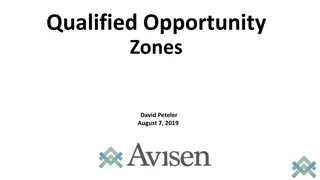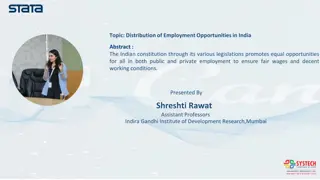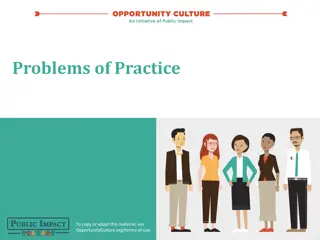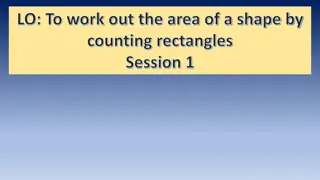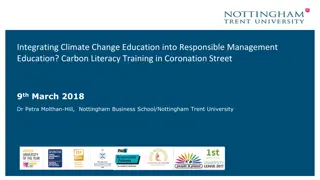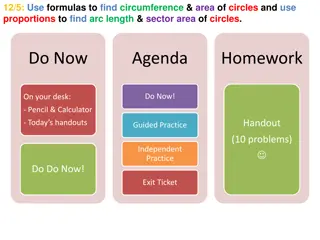Addressing Challenges in Stoke-on-Trent Opportunity Area
Stoke-on-Trent, ranked low in social mobility, faces issues like child poverty, poor housing, and educational struggles. The Opportunity Area aims to improve outcomes by engaging pupils, enhancing early years education, boosting academic performance, and expanding career choices.
Uploaded on Sep 23, 2024 | 0 Views
Download Presentation

Please find below an Image/Link to download the presentation.
The content on the website is provided AS IS for your information and personal use only. It may not be sold, licensed, or shared on other websites without obtaining consent from the author. Download presentation by click this link. If you encounter any issues during the download, it is possible that the publisher has removed the file from their server.
E N D
Presentation Transcript
Stoke-on-Trent Opportunity Area https://stokeontrentopportunityarea.co.uk/
Why a Stoke-on-Trent Opportunity Area? Ranked 298th out of 324 districts in the 2016 Social Mobility Index. There are high levels of child poverty, fuel poverty, poor housing conditions, poor health outcomes and low levels of educational attainment. In 2016, children in over half of all wards across the city failed to meet national averages at all three stages of education. The city consists of six towns, each with its own distinct character. It is suggested that the polycentric nature of Stoke-on-Trent creates a split across the city in terms of both affiliation to individual towns and services offered for children, young people and parents. The Stoke-on-Trent Opportunity Area Delivery Plan was launched March 2018 as part of the 2nd tranche of Opportunity Areas.
Whose who in Stoke-on-Trent? Board and sub-group members are from Our Partnership Board Chairs Watermill Special School Carol Shanahan, Managing Director Synectics Solutions Liz Barnes, Vice- Chancellor Staffordshire University Staffordshire University Sutherland Academy Stoke-on- Trent 6th Form College Stoke-on- Trent College Synectics Solutions Tiny Toez Ltd Rosy Cheeks Nursery Stoke-on- Trent City Council Port Vale FC Sandon Primary Academy Maths Excellence Partnership Abbey Hill School Michelin plc PM Haywood Lane Academy National Citizens Service The St Training Kemball Special School Field House Nursery Meadows Primary Academy Wilfred s Academy Stoke Assoc for Sch & Coll Leaders St Marks CE Primary School Stoke City FC Education Endowment Fund Careers Enterprise Company Moorpark Jnr School Head Start Day Nursery Painsley College NHS Trust Thistley Hough Ormiston Sir Stanley Matthews Academy The All Saints Catholic MAT Staffordshire Police YMCA Advanced Personnel Management NCOP Crescent Academy
Stoke-on-Trent: our priorities The Stoke-on-Trent Partnership Board has agreed a plan which will focus on 4 areas and 3 enabling themes: The Stoke-on-Trent Partnership Board has agreed a plan which will focus on 4 areas and 3 enabling themes:
Stoke-on-Trent: our targets IMPROVE PUPIL ENGAGEMENT IN LEARNING AT ALL STAGES Making sure children are happy, resilient and equipped with the skills to learn IMPROVING OUTCOMES IN THE EARLY YEARS FOUNDATION STAGE Giving children the best possible start in life and learning IMPROVE OUTCOMES IN ENGLISH, MATHS AND SCIENCE Build strong foundations for key stage 4 by boosting attainment in primary and supporting transition into secondary IMPROVE THE CHOICES YOUNG PEOPLE MAKE FROM 16 Ensuring a pipeline of highly qualified young people in Stoke-on- Trent who can contribute to a skilled workforce By 2020/21 Stoke-on-Trent will have significantly closed the gap between children in the city achieving a good level of development and their peers nationally. By 2020/21 Stoke-on-Trent will be in the top half of all local authority districts for pupils eligible for pupil premium meeting the expected standard, improving outcomes on this measure for over 250 pupils. Stoke-on-Trent will be in the top half of all local authority districts for pupils eligible for pupil premium meeting the exceeding the expected standard, improving outcomes on this measure for over 70 pupils. By 2020/21 we will reduce unauthorised absence rates by half in primary school (to 150,000) and by two-thirds secondary schools (to below 57,000) so that Stoke-on-Trent is in the top half of all local authority districts for pupils regularly attending school. By 2020/21: Stoke-on-Trent will be in the top half of all local authority districts for the attainment of all pupils in achieving maths and English at level 2 post-16. Raise retention rates for sixteen to eighteen year olds to exceed the national average. Based on 2016 data, this would mean an additional 280 learners continue in the education or training course first selected. This will mean that by 2021/22 at least 100 more children will have reached this level than was the case in 2016. By 2022/23, the city will have closed the gap entirely and will be in the top half of all local authority districts for pupils achieving a good level of development. 5
Stoke-on-Trent: what have we achieved so far in Year 1?(updated August 2018) IMPROVE PUPIL ENGAGEMENT IN LEARNING AT ALL STAGES Making sure children are happy, resilient and equipped with the skills to learn IMPROVING OUTCOMES IN THE EARLY YEARS FOUNDATION STAGE Giving children the best possible start in life and learning IMPROVE OUTCOMES IN ENGLISH, MATHS AND SCIENCE Build strong foundations for key stage 4 by boosting attainment in primary and supporting transition into secondary IMPROVE THE CHOICES YOUNG PEOPLE MAKE FROM 16 Ensuring a pipeline of highly qualified young people in Stoke-on- Trent who can contribute to a skilled workforce Careers Hub being established. Post 16 GCSE English and maths resits. Careers Enterprise Company (CEC) activity Proposals in pipeline: Post 16 SEND/supported internships. High-ability post 16 students. Post 16 RONI tool Learner Basic Skills Employer links into primary schools. Maths Excellence Partnership and Maths Hub continue to work together to develop a city-wide maths strategy. Tool to identify Year 6/7 at risk audit Primary-secondary school Transition project underway. Projects in development: Pupil Premium review training; creation of a new English Hub and a Science Hub . Speech, Language & Communication pilot project begun in early years settings. Projects in development around: improving the take-up of 2, 3 and 4 year old early education entitlement; Understanding the World ; improving phonics teaching in early years settings; Improving engagement and skills of parents in areas of greatest need to improve SLC learning in the home. 2m Essential Life Skills project: schools now have access to a wide range of curriculum linked extra- curricular activities. Ay Up Duck piloted (tackling holiday hunger ) and expanding. Space project working with Staffs Police & Crime Commissioner to reduce anti- social behaviour. National Citizenship Service (NCS) activity. Youth Ambassador programme in development. Cross-cutting: Better Together a 1m project to bring social workers and ALL schools together to support families and children more effectively. Allocation of 100,000 to seed-fund small projects of up to 3,000. We re developing a city-wide Mentoring offer We are working with the Teaching Schools and Teach First on developing a Teacher recruitment & retention strategy. We are working with the LA to develop a work programme linked to their developing mental health strategy. 6
Where does this link to the current LEP Skills Strategy? CEC work Raising attainment in Eng, Ma & Science (the Hub model). Employer Primary school project Careers Guidance (LEP priority 2) Skills (LEP priority 3) Essential Life Skills (eg: STEAM projects etc) Work readiness projects: Learner Basic Skills; SEND internships; early years and college students P16 High Ability Students into degrees/degree apprenticeships Improving outcomes in Post 16 GCSE Eng & Ma
What does success look like? Better collaboration in the system (more partners working together, more purposefully, more permanently). Leave behind a legacy of commitment to improving social mobility via our interventions, of better use of data and evidence to inform policy locally and of greater join-up and coherence of interventions. Meet our targets. Improved academic outcomes in particular at primary. Help build a skilled workforce which will benefit the economic development of the city.
Whats next? Over the next few months finalising and initiating multiple projects linked to the delivery plan targets. Consider how to address wider determinants like parental engagement, building a quality education workforce and supporting emotional wellbeing and behaviour of pupils. See where gaps lay and use the remaining OA budget effectively. Sustainability / legacy. How can we further involve the LEP in the Opportunity Area can we do more collectively?
